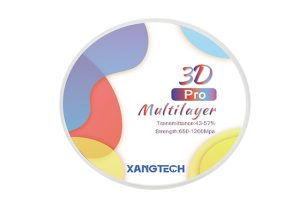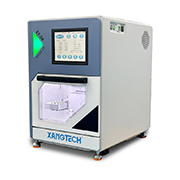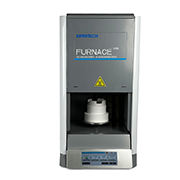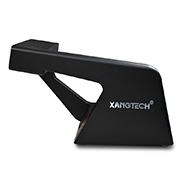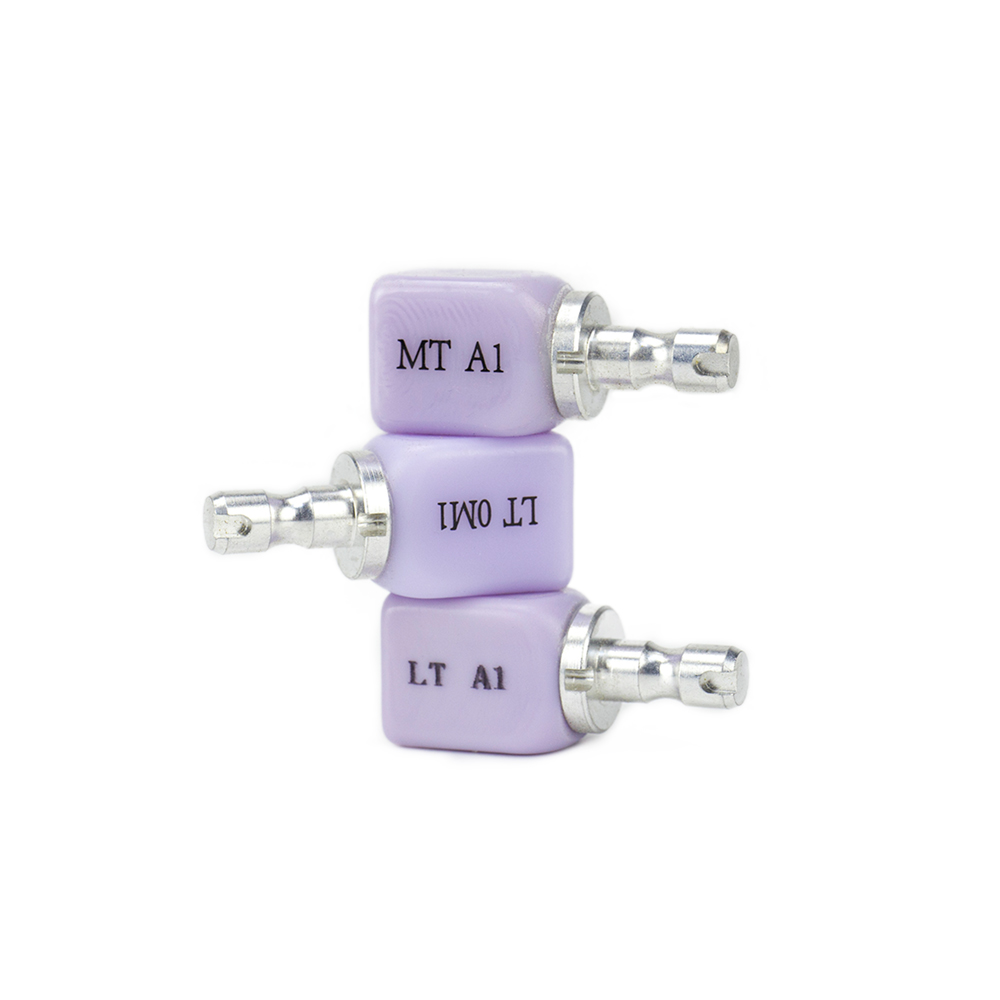Lithium disilicate has emerged as a preferred material for dental restorations, particularly due to its excellent aesthetic outcomes and mechanical properties. In the context of dental milling, it plays a significant role in delivering high-quality prosthetics that meet both functional and aesthetic demands. The integration of lithium disilicate blocks in milling procedures has transformed how dental professionals approach complex restorative cases, allowing for greater precision and superior results.
Understanding Lithium Disilicate in Dental Milling
Composition and Benefits of Lithium Disilicate
Lithium disilicate is a glass-ceramic material composed predominantly of lithium oxide and silicon dioxide. Its unique composition ensures a balance between strength and translucency, making it an ideal choice for esthetic applications in dentistry. The material is renowned for its excellent flexural strength, which typically exceeds 400 MPa, allowing for durable restorations that withstand significant masticatory forces. Additionally, lithium disilicate blocks offer a high degree of translucency, which closely mimics natural tooth enamel, thereby enabling more lifelike restorations that cater to the patient’s aesthetic preferences.
Applications in Modern Dentistry
Lithium disilicate is versatile and is utilized in various applications within modern dentistry. It is particularly effective in fabricating veneers, crowns, and bridges, where aesthetic considerations are paramount. The ability to create thin, translucent restorations without compromising strength allows dentists to provide minimally invasive options to patients. Furthermore, the material’s natural esthetic qualities are enhanced through layering techniques, which can incorporate staining and glazing to achieve the desired shade and surface texture. This adaptability makes lithium disilicate blocks an essential tool in the dental milling process. In contrast, bloco de zircônia é mais adaptada à situação de requisitos especiais para a for ça do produto acabado ou a necessidade de minimizar a lesão oral e evitar reações adversas do paciente.
Comparative Analysis with Other Materials
When compared to traditional materials like porcelain or composite resins, lithium disilicate demonstrates superior mechanical and aesthetic properties. Porcelain restorations, while aesthetically pleasing, can be more brittle and less forgiving under stress. Composite resins, on the other hand, lack the same level of translucency and can discolor over time. Lithium disilicate effectively bridges the gap between these options, combining high strength with exceptional aesthetics. Additionally, the milling process yields a more precise fit, reducing the need for adjustments during placement, which is a significant advantage over some other restorative materials.
The Role of Press Ingot in Aesthetic Dental Solutions
Overview of Press Ingot Techniques
Prema ingots são um componente essencial na produção de restaurações disilicadas de lítio. Essa técnica envolve usar um ingô especialmente projetado que é aquecido e preso em uma molde para criar restaurações dentárias altamente precisas. A técnica de pressor permite um fluxo suave e até mesmo do material, assegurando uma restauração final densa e homogênea com porosidade mínima. Os fabricantes de XANGTECH se orgulham de seus métodos avançados de ingot de imprensa, que melhoram a qualidade e a coerência gerais da lithium disilicate blocks usados na molhadura dental.
Melhoria da Aparência Visual: Princípios-chave
Para alcançar resultados estéticos óptimos usando restaurações de blocos de disilicado de lítio, devem ser seguidos vários princípios-chave. A seleção da sombra e transparência certas é crítica; Portanto, entender as técnicas de camada do material é benéfico. Ao usar diferentes sombras e opacidades, profissionais dentais podem replicar a anatomia natural dos dentes eficazmente. Além disso, técnicas de polimento e vidro aplicadas após o processo de molhimento também podem melhorar os resultados estéticos, resultando em restaurações que não só se encaixam bem, mas também se misturam sem problemas com a dentificação ao redor.
Considerações de durabilidade e força
A durabilidade das restaurações disilicadas de lítio é outra razão convincente para sua popularidade na dentistia moderna. Enquanto alcançar uma finalidade estética é vital, a longevidade da restauração é crucial para a satisfação do paciente e o sucesso clínico. A tecnologia do ingot de imprensa utilizada em conjunto com o disilicado de lítio assegura que o produto final tem maior densidade e propriedades mecânicas melhoradas, o que contribui para sua durabilidade. Ao fatorar a for ça ao lado de considerações estéticas, os médicos podem fornecer uma solução que satisfaça e exceda os requisitos funcionais, otimizando assim os resultados do tratamento para seus pacientes.
Contribuição do XANGTECH para a Optimização Estética
Inovações da XANGTECH em Tecnologia da Moleia Dental
XANGTECH está na frente da tecnologia de molhimento dental, especificamente no contexto de aplicações de blocos de desilicação de lítio. A empresa o compromisso com a inovação levou ao desenvolvimento de técnicas avançadas de molhimento que asseguram o ajustamento preciso de restaurações com necessidade mínima de ajustes. Ao aproveitar a tecnologia CAD/CAM atual, XANGTECH otimiza os processos de design e fabricação, resultando em restaurações que mantêm as qualidades estéticas naturais desejadas por clínicos e pacientes. Além disso, a integração dos sistemas automatizados permite aumentar a eficiência e a coerência durante o processo de molhamento, assegurando que cada restauração cumpra os altos padrões de qualidade que os profissionais dentários esperam.
XANGTECH’s Approach to Quality Control and Precision
O controle da qualidade é primordial na produção de blocos disilicados de lítio, e o XANGTECH emprega processos rigorosos para assegurar que cada ingot cumpra padrões especificados. Ao implementar protocolos de testes rigorosos em vários estágios de produção, a empresa garante que seus blocos de dixilicado de lítio mostram as propriedades mecânicas e características estéticas necessárias. Além disso, XANGTECH’ os sistemas de molhamento de precisão permitem personalização detalhada das restaurações, proporcionando aos profissionais dentários a flexibilidade para atender as necessidades individuais dos pacientes. Essa abordagem não s ó reforça a durabilidade e a força dos produtos finais, mas também reforça a reputação de XANGTECH como um fornecedor confiável de materiais dentários de alta qualidade.
Success Stories and Industry Recognition
XANGTECH’s dedication to advancing dental technology has garnered several success stories and industry recognition that highlight its positive impact on aesthetic outcomes. Numerous dental laboratories that incorporate XANGTECH’s lithium disilicate blocks have reported increased patient satisfaction due to the superior aesthetics and fit of their restorations. These success stories are further complemented by industry accolades from professional organizations, which have recognized XANGTECH’s contributions to dental innovation. By continually refining its processes and staying updated with the latest trends in dental technology, XANGTECH has established itself as a leader in the field, encouraging more dental professionals to adopt lithium disilicate blocks as the material of choice for aesthetic restorations.
In summary, the impressive qualities of lithium disilicate, along with XANGTECH’s advanced technological contributions, underline the significance of optimizing aesthetic outcomes in dental restorations. By merging innovation with precision, XANGTECH enhances the accuracy and milling outcomes of molhamento dental máquina, permitindo soluções adaptadas e de alta qualidade que atendam às necessidades funcionais e estéticas na dentistia contemporânea.
Conselhos práticos para alcançar resultados óptimos

Selecionar o material certo: fatores a considerar
Necessidades específicas para o paciente
Quando se trata de selecionar o material adequado para restaurações dentárias, entender o paciente suas necessidades específicas s ão cruciais. Isso envolve considerar fatores como a anatomia dentária do paciente, requisitos funcionais e preferências pessoais em relação à estética. Casos diferentes podem requer graus variados de transparência e força. Portanto, colaborando estreitamente com os pacientes e incorporando seu feedback no processo de tomada de decisões ajudará a assegurar que a restauração final não só atende às necessidades clínicas, mas também se alinha com o paciente’ as expectativas de seu sorriso.
Requisitos Funcionais
Os requisitos funcionais da restauração dentária desempenham um papel significativo na seleção de materiais. É essencial avaliar a distribuição do estresse durante a masticação, pois restaurações em zonas de alto estresse, como dentes posteriores, podem requer materiais mais robustos. Blocos disilicados de lítio oferecem um elogiado equilíbrio de for ça e estética, tornando-os adequados para aplicações anteriores e posteriores. Além disso, considerando as relações oclusais e o paciente as tendências do bruxismo podem guiar os profissionais na determinação da espessura ideal e técnicas de camadas para otimizar a força ao mesmo tempo que preservam a estética.
Mantenimento e Longevidade das Restaurações Dentais
Protocolos de limpeza
Maintaining the longevity of dental restorations is vital, and appropriate cleaning protocols must be instated. Patients should be advised to adopt a gentle oral hygiene routine that includes brushing with a soft-bristled toothbrush and non-abrasive toothpaste. Flossing is equally essential to prevent plaque buildup around the restoration margins. It is also advisable to avoid using hard-bristle brushes or aggressive cleaning devices that might compromise the surface quality of the lithium disilicate restorations, ensuring that their esthetic properties remain intact over time.
Follow-Up Care Strategies
Follow-up care is imperative after the placement of lithium disilicate restorations to monitor their condition and address any issues promptly. Practitioners should schedule regular check-ups to assess the fit, aesthetics, and overall health of the restoration. Educating patients on recognizing signs of wear or potential failure, such as discoloration or sensitivity, can facilitate early intervention. Additionally, reinforcing the importance of continuous oral hygiene and routine dental visits can contribute significantly to the longevity of these aesthetic restorations.
Future Trends in Lithium Disilicate Application
Technological Advancements by XANGTECH
XANGTECH continues to lead the way in dental technology, particularly in the realm of lithium disilicate applications. The company is investing in research and development to enhance the properties of lithium disilicate blocks, including increased translucency and improved mechanical strength. Emerging technologies such as digital printing and advanced CAD/CAM milling techniques are making it possible for dental professionals to achieve more precise and personalized restorations. These advancements will not only enrich the aesthetic qualities of dental restorations but will also streamline the manufacturing process, ensuring efficient delivery of high-quality products.
Expected Developments in Material Science
The field of material science is continually evolving, and it is expected that new formulations of lithium disilicate will emerge that can further enhance its performance. Ongoing research is focused on developing materials that can exhibit even greater strength without compromising aesthetics, potentially leading to restorations that can endure higher stress levels. The introduction of bioactive glass composites may also revolutionize dental restorations, promoting better integration with the natural tooth structure and contributing to improved overall oral health. As these innovations come to fruition, they will undoubtedly reshape the standards of care within the dental industry.
Anticipated Industry Shifts and Impacts
As the dental industry continues to embrace technological advancements, a significant shift towards the adoption of digital workflows can be anticipated. This technology allows for improved precision in treatment planning and implementation, leading to better patient outcomes. Furthermore, as practitioners recognize the advantages of lithium disilicate blocks, there is likely to be a growing preference for these materials over traditional options. Enhanced education on the benefits of aesthetic dentistry will also influence patient choices, driving demand for high-quality, esthetic solutions that align with the evolving landscape of dentistry. The comprehensive understanding and application of these advanced materials will ultimately reshape restorative practices, fostering an environment where aesthetic outcomes are paramount.

